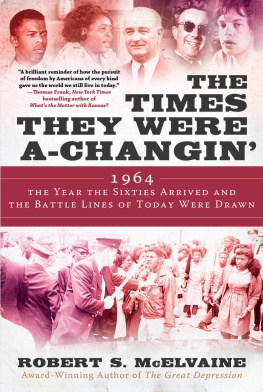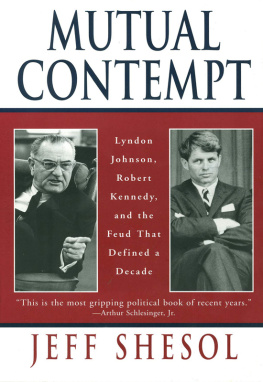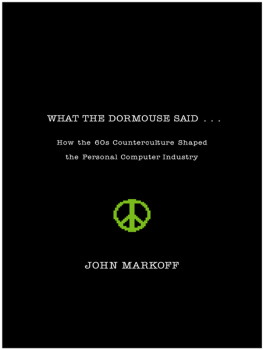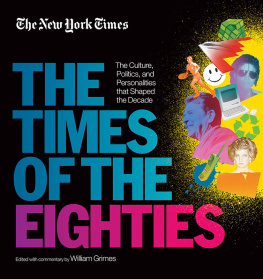New York Times Company (COR) - Times of the Sixties : The Culture, Politics, and Personalities That Shaped the Decade
Here you can read online New York Times Company (COR) - Times of the Sixties : The Culture, Politics, and Personalities That Shaped the Decade full text of the book (entire story) in english for free. Download pdf and epub, get meaning, cover and reviews about this ebook. year: 2014, publisher: Hachette, genre: Detective and thriller. Description of the work, (preface) as well as reviews are available. Best literature library LitArk.com created for fans of good reading and offers a wide selection of genres:
Romance novel
Science fiction
Adventure
Detective
Science
History
Home and family
Prose
Art
Politics
Computer
Non-fiction
Religion
Business
Children
Humor
Choose a favorite category and find really read worthwhile books. Enjoy immersion in the world of imagination, feel the emotions of the characters or learn something new for yourself, make an fascinating discovery.

- Book:Times of the Sixties : The Culture, Politics, and Personalities That Shaped the Decade
- Author:
- Publisher:Hachette
- Genre:
- Year:2014
- Rating:3 / 5
- Favourites:Add to favourites
- Your mark:
- 60
- 1
- 2
- 3
- 4
- 5
Times of the Sixties : The Culture, Politics, and Personalities That Shaped the Decade: summary, description and annotation
We offer to read an annotation, description, summary or preface (depends on what the author of the book "Times of the Sixties : The Culture, Politics, and Personalities That Shaped the Decade" wrote himself). If you haven't found the necessary information about the book — write in the comments, we will try to find it.
Times of the Sixties : The Culture, Politics, and Personalities That Shaped the Decade — read online for free the complete book (whole text) full work
Below is the text of the book, divided by pages. System saving the place of the last page read, allows you to conveniently read the book "Times of the Sixties : The Culture, Politics, and Personalities That Shaped the Decade" online for free, without having to search again every time where you left off. Put a bookmark, and you can go to the page where you finished reading at any time.
Font size:
Interval:
Bookmark:

THE TIMES OF THE SIXTIES
The Culture, Politics and Personalities that Shaped the Decade
Edited with commentary by John Rockwell

Sex! Drugs! Rock n Roll! Plus the Vietnam War and protests, race riots and civil rights legislation, the Great Society and assassinations, the space race and men walking on the moon (or on a Hollywood soundstage, if you bought into the swirling conspiracy theories of the day)! It was a decade of exclamation points.
Most of us who were there remember it well. For nostalgists, or those blitzed beyond recall, or you younguns who didnt have the good fortune to live through that thrilling, turbulent decade: Heres this book. Its a record of the times by The Timesand, hence, a record of those recording that time. For us 1960s survivors who worked at The New York Times (I arrived in 1972, which was still part of the 60s if you accept the narrative that the decade leaked well into the next one), the stories condensed here are also part of the history of this particular newspaper. How it has since changed, its many strengths and occasional biases (East Coast versus West; sometimes a little slow to register the arts and lifestyles upheavals happening under its very nose)all that is of interest to an examination of the decade, and of newspapers.
For us Times veterans, this book is a chance to revisit the bylines of writers we knew, or at least worked with, and to savor such endearing Times quirks as Mr. and Mrs. and fancy words that would not be tolerated today, like catenary and malefic. The Times is very different nowhipper, trendier, more international and populist, online. It is no less serious but also less wedded to the Upper East and West sides of Manhattan. Still, it was the newspaper of record in the 60s, as it is today, and this book is a distilled account of that noble mission.
As has been asserted over and over ever since, the 1960s was the key decade of the 20th centurythe most dramatic, the most controversial, the most thrilling. Only the 20s might be able to challenge it; but for transformative impact, nothing tops the 60s. Its resonance echoes to this day, positively and negatively. Of course, depending on where you stand along the political spectrum, what seems positive to you could seem negative to someone else, and vice versa. Our own daughter, 25, buys into most of the values of the 60s but professes herself sick of hippies. Forget not: The 60s were when the reaction against the 60s beganthe right-wing populist uprising led by Barry Goldwater, the election of Ronald Reagan as governor of California, the onset of the Republicans Southern strategy that flipped the Southeast into nearly solid red-state territory.
Controversy starts with where you measure the decade. Not only did it maybe not end on December 31, 1969 (although it does in this book), it also didnt maybe begin until 1964, with the student protests in Berkeley. And while values and lifestyle of the 60s persisted into the 70s, as good an ending as any, certainly for this book, was the Altamont Festival just north of Berkeleya pairing of idealistic protest and biker brutality that attests to the role of the West Coast as the epicenter of lifestyle innovation.
Another way of looking at the decade is as not exactly a war but a tension between the political and the nonpolitical, which is yet another way of looking at coastal differences. Crudely considered, nonpolitical issuesthe hippies, drugs, exotic religions, murderous maniacsdefined the American West Coast. The Times, not yet the national (and international) newspaper it was to become, paid heed to what was going on out there but from afar (even in a failed West Coast edition, published from 1962 to 1964). Despite East Village hippies and their attendant tribal customs, politics ruled in the east. Protests against the Vietnam War and, underlying it, the draft somehow seemed more intense in New York. Angrier, too.
This book is divided into sections that are roughly comparable to sections of The Times. We begin with National news, which was amazingly rich, intense and scary. The struggles and triumphs of the civil rights movement claim pride of placethe lunch counter sit-ins, the Freedom Riders, the landmark court cases, the rise of the black power movement, and the stain of assassinations cutting down black leaders as well as white. The Times may have slighted the west, but it was rock-solid in its coverage of the south.
Those murderous assaults that snuffed out the optimism of John F. Kennedys Camelot, blighting the countrys image and self-image, extending to Robert Kennedy and Dr. Martin Luther King Jr. and Malcolm X and even the actress Sharon Tate, at the hands of the crazed Manson cult, were a terrifying reminder of the instability of both public and private life.
The Vietnam War brought down Lyndon B. Johnson, who, with a solid economy and Democratic majorities in Congress after 1964, achieved a string of legislative domestic victories that are the envy of our stalemated present day. The war also fueled youth protests of the decade, in turn linked to the momentous changes in lifestyle and culture that recur throughout the decade and these pages.
The war dominated internationally, at least from the American perspective, but so did the larger cold war, which triggered the space racea source of building excitement and tragedy, potential and actual, throughout the decade (covered here in the Science section). That culminated with Neil Armstrong and his fellow astronauts walking on the moon (which I, for one, choose to believe actually happened). The cold war inspired terror (fallout shelters), but it also galvanized our society and federal government into grand projects (men on the moon) that have shrunk in recent decades as the costs of other wars pile up and large segments of the populationglued to Fox News and recoiling from the New Deal and the Great Societyseek to diminish the role of national government in the execution of such grand national, international and extraterrestrial achievements.
But the world beyond the United States was full of other dramas, too, and The Times was there for most of them. The Berlin Wall. The failed Bay of Pigs invasion and the Cuban missile crisis, which arguably counts as the scariest confrontation of the cold war. Israels Six-Day War and the rise of the Palestine Liberation Organization. Seemingly uncountable African nations taking shape in the wake of colonialism. Reforms within the Catholic Church. Chinas hydrogen bomb and brutal Cultural Revolution. Student protests abroad, in Paris and Berlin and Mexico City and beyond. The Prague Spring and its stark repression by Soviet tanks.
Economically, the 60s seem in retrospect to have been relatively stable. Growth was steady and solid, unemployment tolerable, inflation of concern but not excessive. The income of the average American, and hence the lifestyle that income permitted, blossomed during the decade. That economy, in turn, made Kennedys and Johnsons federal programs more affordable, however controversial they were at the time. The huge corporate mergers that have persisted down to our own time gained momentum, and todays commonplaces like credit cards and certificates of deposit got under way.
The Times understandably paid considerable attention to its home city. Even more than now, New York dominated the country in finance, media, culture and, at least when it came to the Yankees, sports. Given its national prominence, some news that transpired in New York has been rightly apportioned to other sections in this book. Other local storieslike the rescue of Carnegie Hall from demolition and Robert Mosess reshaping of the city, or Mayor John V. Lindsays triumphs and troubles, or crippling labor strikes and power blackouts and disasters, or even the opening of the Lincoln Center complexwere municipal and national all at once.
Next pageFont size:
Interval:
Bookmark:
Similar books «Times of the Sixties : The Culture, Politics, and Personalities That Shaped the Decade»
Look at similar books to Times of the Sixties : The Culture, Politics, and Personalities That Shaped the Decade. We have selected literature similar in name and meaning in the hope of providing readers with more options to find new, interesting, not yet read works.
Discussion, reviews of the book Times of the Sixties : The Culture, Politics, and Personalities That Shaped the Decade and just readers' own opinions. Leave your comments, write what you think about the work, its meaning or the main characters. Specify what exactly you liked and what you didn't like, and why you think so.








